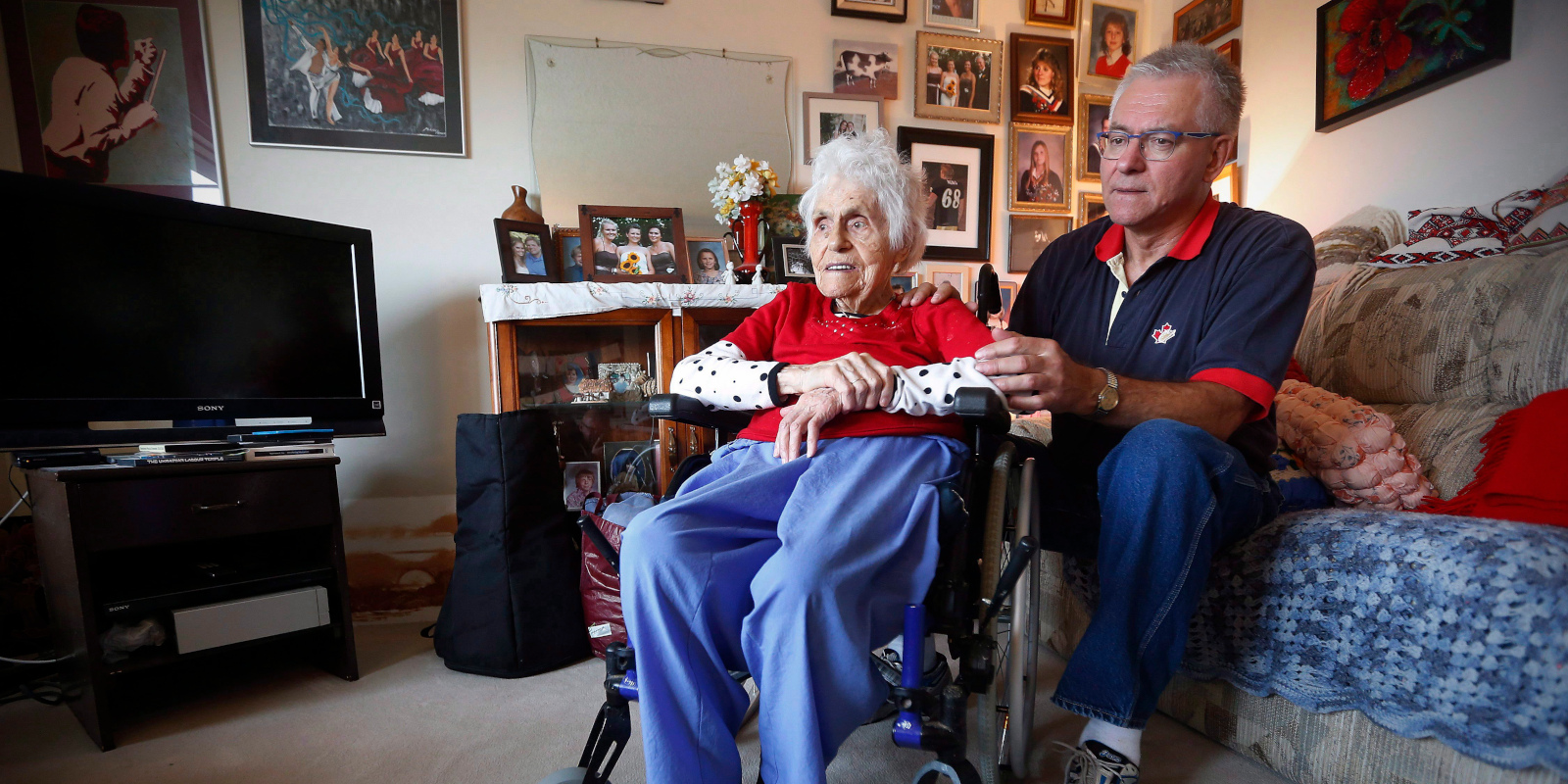
Over the next few weeks, The Hub will be expanding upon the top five submissions for the 2023 Hunter Prize for Public Policy, which asked for proposals that would tackle the problem of Canada’s lengthening wait times for medically necessary care. In each of these dispatches, readers will get a closer look at the issues at play, as well as analysis from experts in the field.
Health care in Canada was facing challenges even before the pandemic, but since 2020, the system has been under an even greater strain. Wait times for medically necessary care are longer than ever, and staff are increasingly exhausted, with many either leaving the profession or seriously considering doing so. Combine these issues with a population that is, on the whole, unhealthier, and access to care has become more limited.
In a submission for the 2023 Hunter Prize for Public Policy, Ayeshah Haque, a midwife and researcher, suggests that the creation of mobile, integrated health-care teams capable of conducting home visits could help free up space in hospitals and improve the work-life balance of health-care workers.
Under Haque’s proposal, paramedics, nurses, midwives, and internationally trained personnel would be eligible to form a home-visit team. A manager would be assigned by a hospital, and the hospital would cover the costs of salary, benefits, mileage, equipment, supplies, and insurance. The teams would meet twice a day, either in person or remotely, with case reviews to refine program protocols and processes.
Haque anticipates that home visit teams would receive $50 an hour in addition to the equivalent of 10 full day’s pay. Staff would be permitted to maintain seniority, and would not be considered to have left their home-care team.
Easing pressure on emergency rooms
To demonstrate how a home-care team would work—and relieve pressure on emergency room and other hospital staff—Haque invites readers to consider a scenario in which someone feels unwell and goes to the emergency room, perhaps waiting several hours for care that could have been provided elsewhere. She notes that this patient’s needs could alternatively be met through a prompt assessment by a home-visit team. This could potentially pre-empt an unneeded emergency room visit by determining whether or not the patient truly requires that level of care.
Haque presents a second scenario: one in which a patient has been struggling with her mental health and has not eaten for days. Her family calls for emergency services. The home-visit team could offer to assess the patient at home and provide supportive care. At the same time, the team could craft a care plan with a nurse practitioner or physician to be used until a hospital bed or psychiatrist is available.
In the two examples above, Haque demonstrates how pooling health-care providers into home-visit teams can lessen the burden on emergency rooms by diverting non-urgent patients away from the hospitals.
“Expanding community paramedicine programs into interdisciplinary teams that provide home visits and link community and hospital settings can address prolonged ER visits, [and] improve outcomes and experiences for patients while providing continuity and culturally safe care,” says Haque, pointing out that treatment for conditions such as asthma and information about birthing procedures can be provided via home care, thus shortening wait times for these services.
As evidence for why this model could work, Haque cites the ability of midwives to provide high-quality services outside of hospitals; she also points to the link between nursing home visits and reduced ER waits and hospital readmissions.
Helping exhausted health-care workers
Staff burnout was an issue in Canadian health care before COVID-19 began to spread, but exhaustion brought on by the pandemic led to thousands of medical personnel leaving their jobs due to physical and mental strain.
Data from the Government of Canada in 2022 found that 95 percent of health-care workers felt their jobs had been impacted by the pandemic and roughly 87 percent were more stressed; one in four nurses planned to quit their jobs within three years.
“These care providers are seeking better work-life balance and/or [are] unable to work in their current models,” writes Haque.
She notes that the data on health-care staffing shortages, while limited, suggest that many skilled health-care workers have not exited health care completely; rather, they are inactive or not working in clinical environments. Her proposal suggests that members of home-visit teams would have the option of casual or part-time work, and would be able to pick up shifts when the emergency room is busier than usual. This flexibility could address some of the concerns raised by health-care professionals about the demanding nature of their work.
In line with these observations, Shawn Whatley, a physician and Munk senior fellow in health policy at the Macdonald-Laurier Institute, emphasizes that health-care professionals enjoy patient interaction but are often overwhelmed by administrative tasks.
“I’ve never seen them retire because they really got sick of patients. They get sick of everything else. They get sick of the administrative burden or the bureaucratic environment or the top-down approach to infection prevention and control committees,” he says.
Home teams could present communications challenges
Emmanuelle Faubert, an economist at the Montreal Economic Institute, believes home-visit teams would be a great preventative measure, and agrees they would free up space in emergency rooms. One concern, however, is that hospitals are already short-staffed and that implementing these teams would require more trained personnel for roles such as communications.
“As it is right now, [the hospitals’] lack of flexibility is making their staff leave,” she says. “The flexibility inside of the hospital settings should probably be addressed before we give them the responsibility of managing these community teams.”
Krystle Wittevrongel, a senior policy analyst with the Montreal Economic Institute, likes Haque’s proposal, but she, too, has some concerns about communication. How, she wonders, would communication between patients, home-visit teams, and ER physicians (if required) work?
“There has to be some way of considering this within implementation, as well as how this would be funded,” Wittevrongel says. “Would the liaising with the doctor be remunerated the same way as if they had seen the patient in person? If so, the system is effectively being charged twice for the same patient, and this would ultimately increase costs.”

Questions about funding remain
Hospitals in Canada are currently funded under the global budgeting system, in which an annual budget is allocated based on the level of services provided and number of patients treated during the previous year. A number of other countries have adopted activity-based funding—a system in which hospitals are funded according to real-time needs, with government entities setting the prices for the services and procedures provided.
“With global budgeting, hospital-funding this would be problematic, in my opinion, as you aren’t going to have the carve-outs for these services appropriately when needed,” says Wittevrongel. “Combining [this] with activity-based funding would be useful.”
Wittevrongel wonders if hospitals would be willing to dedicate parts of their budgets to the home-visit teams rather than in-hospital work.
Nadeem Esmail, a senior fellow of the Fraser Institute and former director of Health System Performance Studies, has similar questions. And like Wittevrongel, he believes activity-based funding would be better suited to hospital-run community teams.
“What is the incentive for the hospital to do it? Why would a hospital today be interested in creating this whole program to spend a bunch of money on services?” he asks. “From a hospital’s perspective with activity-based funding, if I don’t have as many patients coming who can be treated effectively at home, then the hospital can take more complex patients and treat them more rapidly, which…increases revenue.”
Esmail also notes that hospitals don’t necessarily have to be the only managers of the community teams. “It could be run by general practitioners in multidisciplinary practices, it could be run by hospitals, it could be run by health regions.”
Regional differences
Shawn Whatley notes that versions of community-based teams have worked well in urban settings.
“Definitely in downtown Toronto, I think it’s worked very well, where you can have a team not travelling very far,” he says. “The person is just in the home, they’re in the apartment building literally across the street from the hospital, and you have a team that walks over, sees the patient, and does whatever they need.”
As a province-wide system, however, Whatley says it will not have the same effect.
Wittevrongel says that needs in rural areas can also be addressed by increasing funding for nurse-practitioner (NP) clinics. Nurse practitioners are health practitioners who can work alone, or with other health-care personnel, to deliver care.
“NPs can do much of the same as family doctors,” says Wittevrongel. “Having funding options available for these clinics can also be extremely effective for rural and remote areas.”
Nurse practitioners do have a role in Haque’s proposal. She suggests that one would be assigned by the hospital to supervise patient flow and care plans for the home-visit teams, as well as evaluate the implementation of the home-visit team and its impact on emergency rooms and the community.
Additionally, Haque says that nurse practitioners practicing home visits in the United States have already demonstrated that their services reduced emergency room visits and hospital readmissions.
Recommended for You

The year we cure Gell-Mann Amnesia: The Hub predicts 2026

The collapsing birth rate becomes front-page news, and a long-foretold financial crash? The Hub predicts 2026

Carney gets a majority, but Canadians vote the Liberals out in a snap election: The Hub predicts 2026

Supply management will be sacrificed to appease Trump, and the Netflix takeover is bad for Hollywood: The Hub predicts 2026




